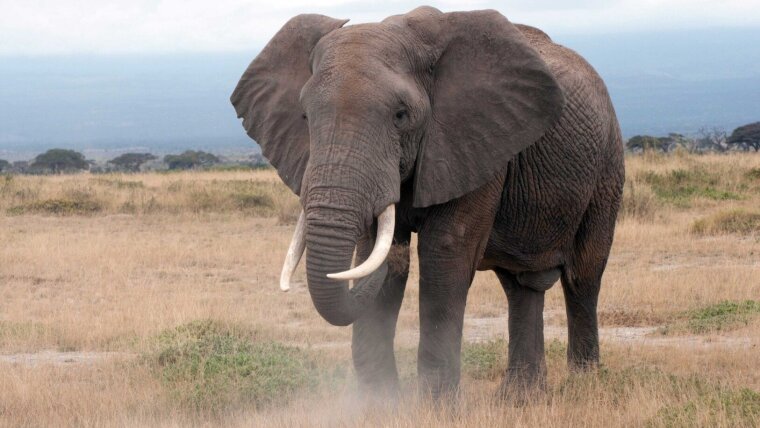
Published:
Source article
A new study has revealed that African Elephants have an extraordinary ability to meet their colossal food requirements as efficiently as possible. Data from over 150 elephants demonstrated that these giants plan their journeys based on energy costs and resource availability. The findings – published in the “Journal of Animal Ecology” – could provide crucial information to help protect these animals and their habitats.
Being an elephant is no easy task. As massive herbivores weighing several tons, they must consume vast amounts of low-calorie vegetation every day. However, their sheer size means that moving around to find food costs significant physical effort. Literally every step matters — especially in the vast, often harsh landscapes they traverse.
Understanding how elephants move through the landscape is essential for designing effective conservation strategies, particularly as habitat fragmentation and human activities continue to threaten populations. But up to now, key drivers behind elephant movements have been unclear.
The new study, led by researchers from the Universities of Jena and Oxford and the German Centre for Integrative Biodiversity Research (iDiv), used GPS tracking data from 157 African elephants collected over a 22-year period (1998–2020) in Northern Kenya. Data were collected by “Save the Elephants”, a UK-registered, Kenya-based research and conservation charity.
Save energy whenever possible
The researcher’s analysis showed that elephants strongly prefer landscapes with lower movement costs, with 94 % of the elephants studied avoiding steep slopes and rough terrain. This suggests they are aware of their surroundings and make cost-benefit decisions to choose the most energy-efficient paths.
Elephants also actively select areas with higher vegetation productivity, with 93 % indicating a preference for resource-rich environments, including water. However, individual elephants can respond differently when it comes to water sources. Some remain close to water sources, while others roam farther, showing that their movement choices are more complex than travelling to the nearest river or pond.
Beyond this, elephants moving at speed show an even stronger avoidance of difficult, more energetically-costly terrain. 74 % of individuals avoided costly areas when moving slowly, which increased to 87 % when moving at intermediate speeds and to 93 % when moving fast. This suggests the animals carefully balance effort and energy efficiency, especially during long journeys.
“While more detailed research is needed to fully understand how an elephant uses its habitat, this study identifies a central decision-making factor for travelling elephants: save energy whenever possible”, co-author Professor Fritz Vollrath of the University of Oxford explains.
Analysing the energy costs of elephants’ movements
To analyse the elephant tracking data the research team employed an innovative modelling method called ENERSCAPE, which estimates the energy costs of movement based on body mass and terrain slope. By integrating these estimates with satellite data on vegetation productivity and water availability, they built detailed energy landscapes that help explain elephants' movement decisions.
A statistical approach called step-selection functions was used to assess how the elephants chose their paths. This technique compares the locations that elephants actually visited with other nearby areas they could have chosen but did not. By doing so, the researchers identified which environmental factors play a role in elephants’ movement decisions and habitat selection.
These findings have direct applications for wildlife conservation, and could help guide the design of protected areas and migration corridors to reduce conflict with humans. The study also suggests that conservation strategies should account for individual differences in habitat preferences, particularly concerning water access.
The results could also help predict how elephant movements may respond to climate change, which affects both the energy costs of moving, and the availability of food and water.
“These new results have important implications for assessing and planning conservation and restoration measures, such as dispersal corridors, by explicitly accounting for the energy costs of moving”, adds first author Dr Emilio Berti, researcher at both the Friedrich Schiller University Jena and iDiv.
In the future, the researchers aim to refine energy landscape models by incorporating additional factors such as seasonal changes, human disturbances, and the impact of climate change on elephant movements.
Original publication:
Berti, E., Rosenbaum, B., and Vollrath, F. (2025): Energy landscapes direct the movement preferences of elephants, Journal of Animal Ecology. DOI: 10.1111/1365-2656.70023External link
Puschstraße 4
04103 Leipzig Google Maps site planExternal link